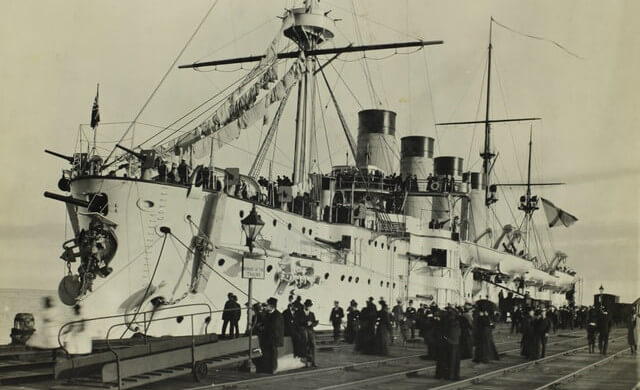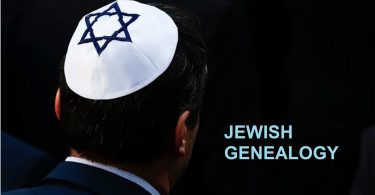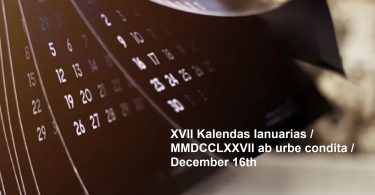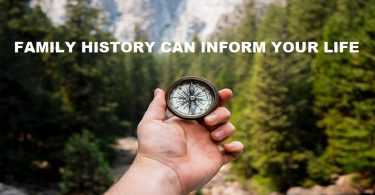Table of Contents
Have you ever wondered where you came from? Or where your ancestors originated? Well, if you have ever asked yourself these questions and got no answer, Ancestry Thrulines is here to help you out. This is a tool for people who want to take their genealogy research further. With ThruLines, you get to identify some of your relatives through DNA matches with barely existing family trees.
ThruLines is a new Ancestry tool aimed at helping you know how you are related to your DNA matches through genealogy using DNA tests and your family line. It is a tool aimed at helping people break the brick walls present when it comes to finding their ancestors. Before we take a look at ThruLines and genealogy, we need to ask ourselves, what is Ancestry DNA ThruLines? How can we use it to make the search for our ancestors easier? How will it help you search for your great grandparents, lost daughter, or a number of relatives you might want to trace?
What is Ancestry ThruLines?
Ancestry ThruLines is a tool by Ancestry that helps one find how one may be related to their DNA matches through common DNA matches. ThruLines is based on the information provided by family trees and without altering the ancestry trees.
Let’s explain that a bit. ThruLines by Ancestry will show all the identified descendants of a specific ancestor who has tested with AncestryDNA and who shares their DNA with the person whose test results are in review. ThruLines in turn provides the ancestral path between the common ancestor and every DNA match along with the amount of DNA shared and the predicted relationship. With ThruLines, you get more as compared to the previous Shared Ancestor Hints. This expands all the information provided by the hints giving better and clearer results.
For long, Ancestry has been able to compare family trees for different testers and any given matches. It also notes down the common ancestors between the common trees. From here, ThruLines comes through and builds on this information by including data from all private and public searchable trees in the Ancestry network. If there is a genetic cousin whose tree is incomplete, ThruLine will provide an opportunity to view the connections which would take a lot of time and research if it was to be done manually. Any time that the data from all family trees is used, the names, places, and dates are supposed to be viewed as clues and not facts. The comparison between many family trees is only as accurate as the data contained in the trees.
Using ThruLines
The making of Thrulines was an ambitious undertaking and genealogists can only say congratulations to the programmers at Ancestry. Throughout the production and Beta testing, they have made significant progress and the changes are seen in the data. DNA results in Ancestry determine your ancestors. Keep this in mind.
When using ThruLines, there are two views: Relationship view and List view.
Relationship View
Relationship view provides the user with a graphical view of all the descendants of a specific ancestor. The default relationship view for the ancestor shows the connection to that ancestor even though some of the details might be collapsed at a time and other testers who are identified as the descendant of a child of the ancestor. The data available for all other children of the target ancestor is collapsed but clicking on the # DNA Matches link under child’s name expands it.
If you are the tester in this case, this will provide you with the details of the ancestral path to each of your DNA matches from the family, your relationship to them and the amount of DNA that you share. These might be people already in your tree or other searchable trees.
List View
The List View mode shows all the descendants same as the Relationship View. The difference is that it shows all this in one list. When you see the relationship view, expanding one line contracts the others automatically. If you are instead looking for a great “at a glance” view, with all of the shared DNA and relationship information included, List View does the job well.
Seeing all relationships and the amount of shared DNA for all relatives in the same place provides the user with a good-cross check of the specific family tree as well as the family tree of your DNA matches. The amount of the shared centimorgans for all the relatives in a family tree is very important in ThruLines. If the shared centimorgans and the predicted relationships aren’t consistent, there might be errors in your family tree or all the trees used when collecting this data. The List View may sometimes make the relationships more apparent than they are because of looking at individual results.
With this information comes the question of accuracy. ThruLines collects and displays data based on your family trees and other members of Ancestry. This means the data is as accurate as the trees the information is based on. If there are mistakes in the ancestry tree, this can cause an error and inaccurate results in Thru Lines.
ThruLines are based on trees and this means they wont prove the specific connection you have to a DNA match. Let me give an example of this. If you have listed someone in your family tree as a second cousin, the person will appear as a DNA match in ThruLines as a second cousin. However, they still can be a first cousin once removed, a half-second cousin, or a number of relationships to you.
What do you need for ThruLines to work?
To get ThruLines using Ancestry:
• Your family tree must be connected to your DNA
• Your tree has to be at least 3 or 4 generations deep
• Your tree must be either a public or private searchable tree. If your tree is unsearchable, you don’t have access to ThruLines.
• You have only one kit for every person connected to the person in that tree. If you make the mistake of having multiple kits for the same individual connected to a single tree, only one of the kits will have ThruLines. This should not be a problem to most people as there aren’t as many people who have tested two times with AncestryDNA ThruLines.
Misconceptions about ThruLines
When ThruLines came out, some people nicknamed it Trulines. While this might sound nice, it is overly ambitious. Just like the connections with family trees, ThruLines have to be verified and proven. This is especially when it suggests new ancestors. You have to explore ThruLines work and the data it uses to produce these results.
ThruLines does not tell you or confirm to you that a specific ancestor is actually your ancestor. ThruLines shows produced results based on the data collected from the individual trees. Shared matches may also appear but you have to verify the data through your family lines. The program will only help if you understand how to use it right from the DNA results summary.
ThruLines doesn’t modify or do anything to your tree automatically. The ThruLines trees in the program are specifically designed for ThruLines.
ThruLines uses different trees to suggest your possible or potential ancestors. This is all fun and amazing but you are not necessarily related to these people nor do you have DNA matches with them. Best to note that. Most people assume all the data collected from different trees is collected from people they are related to or have DNA matches with but it might not be the case.
Be warned. If you are an individual looking for unknown parents and you see your name beneath a placard showing “private” individual in a little hashed box above your name on ThruLines, this doesn’t mean that your unknown parent has been discovered. But then, what does this mean? It means that Ancestry has found it right to “pair” you with a potential ancestor who happens to be a parent based on a combination of name similarity with yours and another person with the same surname but in someone else’s tree.
In ThruLines, a parent/child match is the first match on the matches list. The reason we are saying all this about this program is even though it is a nice and resourceful program, don’t get your hopes up 100%. It is so sad to get excited that you have a parent/child match only to find out that ThruLines provide a “potential parent” who has nothing to do with your genetics. Be prepared for such an outcome and don’t get overexcited. To be on the safer side, check your DNA match list first. To know your common ancestors, like your great grandfather, taking a DNA test is not an option. The DNA circles on ThruLines will help you create a link on the linked tree from your father all through to the deepest it can go.
Some people think it is much easier and faster finding their roots when they have an ancestor in their family tree. Having an ancestor in your family tree doesn’t mean that Ancestry has to use that ancestor. It may provide a potential ancestor from someone else’s tree. Be cognizant of whoever is in your tree and ask yourself why! When Ancestry uses an ancestor from another tree, the program will provide you with the information showing where the specific ancestor was “suggested” from and it also allows you to click on that tree to view their documentation.
Family relationships even in genealogy programs can be complicated. Though it is easier to create member trees, a private tree, and more, the program might produce biased results if there are incorrect trees or if other people s trees interfered with the results. Ancestry customers can now find Thrulines information on their home page and use it to find a lost father, daughter great grandmother, 3rd great grand father and other lost members of their families.
Finding or discovering your ancestors with Ancestry ThruLines is easier and faster. To use it, you only have to know how ThruLines works and be able to dissect the results so as not to get overexcited with some results. Ancestry however warns the users with repeated and extremely visible warnings that ThruLines are not definitive but they are just hints that must be verified with research.







